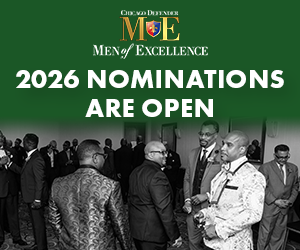
The Birmingham church bombing that killed four African-American girls fifty years ago was no isolated racial horror. At the time, the Sixteenth Street Baptist church bombing was just another in the decade long train of racist terror attacks that included beatings, shootings, mob attacks, ambushes, and, of course, bombings. Dozens were killed in the attacks. The victims had two things in common. They were either targeted for their civil rights work, or targeted solely out of racial hate and revenge. The other was that in nearly every case their killers were never prosecuted, and in more cases than not, were not even arrested though their identities were often well-known. In several cases, they were known because the FBI had fingered them.
The Birmingham bombing was a near textbook example of how officials turned a blind eye toward murder. The man who actually planted the bomb, Robert Chambliss, was quickly identified. He was arrested but not on murder charges, but simply illegal possession of dynamite. He got a paltry fine and a hand slap six-month sentence. His other three accomplices, Herman Cash, Thomas Blanton and Bobby Cherry were also soon identified. They were not arrested. It would take nearly two decades before Chambliss was finally tried and convicted and got a life sentence for the bombing and more than two decades after before Blanton and Cherry (Cash had died) were convicted and got life sentences.
This closed the legal book on this horror. In a few other cases federal prosecutors and D.A.’s in the South were determined to nail the perpetrators of old racial crimes. They scored some notable victories. State prosecutors in Mississippi convicted Byron De La Beckwith in 1994 for the 1963 murder of civil rights leader, Medgar Evers, and former Klan Imperial Wizard Sam Bowers in 1998 for the 1965-firebomb murder of Mississippi NAACP official Vernon Dahmer, and conviction of three Klansmen in the 1964 Birmingham church bombing. For years the murdered men’s relatives pressed prosecutors to bring charges against the killers.
While their prosecution and jailing, is commendable, the racial atrocity book still remains wide open on many others. Some of them were well-known and shocking.
• 1959, Mack Charles Parker was seized from a Mississippi jail by a group of armed white men. Parker was accused of raping a white woman. Ten days later Parker’s mutilated body was fished out of a river in Louisiana. Within three weeks of the killing, FBI agents identified his killers. They had solid evidence that the murderers had crossed state lines, and that law enforcement officers had conspired with the killers. No state or federal charges were ever brought.
• In 1961, a white Mississippi state representative murdered Herbert Lee, a NAACP worker, on an open highway during a traffic dispute. He was unarmed. No state or federal charges were ever brought.
• In 1965, Jimmy Lee Jackson, a black church deacon was gunned down by an Alabama state trooper following a voting rights protest march and rally in Marion, Ala. Eyewitnesses insisted that Jackson was unarmed and did not threaten the officer. No state or federal charges were ever brought.
According to FBI reports, the White Knights of the Ku Klux Klan, a para-military terror squad in Mississippi, committed nine murders between 1960 and 1965. In nearly all cases, FBI agents quickly learned the identities of the suspected killers through Klan informants, or the men’s own boasts of the killings. There was only a token effort made to bring them to justice.
Federal prosecutors have, and in fact always have had, the legal weapons to indict the suspected killers. Two federal statutes have long been on the books that give the Justice Department the power to prosecute public officials and law enforcement officers who committed or conspired with others to commit acts of racial violence.
The four children massacred in the Sixteenth Street Baptist church on that nightmarish Sept. 15 day a half-century ago and the other cold case victims were not solely victims of Klan terrorists, hostile local sheriffs, and state officials, but at times of a racially indifferent federal government. Presidents John F. Kennedy and Lyndon Johnson cautiously and reluctantly pushed the FBI to make arrests and the Justice Department to bring indictments in the murders of the three civil rights workers in Mississippi in 1964, army major Lemuel Penn in Georgia in 1964, and civil rights worker Viola Liuzzo in Alabama in 1965. Even then it took mass outrage and pressure to get legal action against them.
The fiftieth anniversary of the Birmingham church bombing is a reminder of how far the nation has come from its ugly and violent racial past. But at the same time, it also tosses another terrible glare on the period in the South when blacks were murdered with the tacit approval of Southern state officials, and the cold shoulder indifference of the federal government. The commemoration of the bombing presents yet another chance for federal and state prosecutors to permanently close the book on all the nation’s old unsolved racial murders. Without that, the ghosts of that atrocious past will continue to haunt America.
Earl Ofari Hutchinson is an author and political analyst. He is a frequent MSNBC contributor. He is an associate editor of New America Media. He is a weekly co-host of the Al Sharpton Show on American Urban Radio Network. He is the host of the weekly Hutchinson Report on KTYM 1460 AM Radio Los Angeles and KPFK-Radio and the Pacifica Network. His latest ebook ’47 Percent Negro’: A Chronicle of the Wackiest Racial Assaults on President Obama is now available (Amazon).



